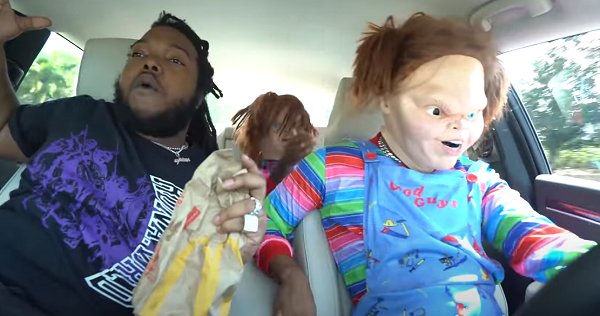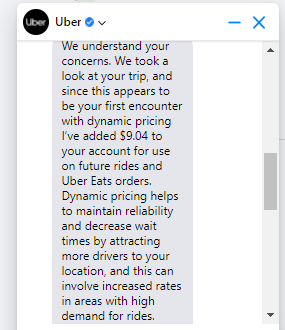
As economics fiscally reflect human nature and vise versa, free will is at the vortex of supply and demand. Within this context individuals or corporations can “get away” with something until they are caught, more power to them, and receive a proportionate financial or legal punishment.
After years of writing about the pratfalls of the gig economy, as accountability is procedurally erased and transformed into a taboo and awkward concept, I faced the ultimate test on patience and strain on the checkbook in a late night incident involving rideshare behemoth Uber and borderline extortion with a shocking and disgusting charge for a simple ride home from the pub.
It is common knowledge that the moment you install the Uber app on your smartphone or device, you are relinquishing a bevy of rights, including forfeiting the option of suing the company, and establishing a “friends” relationship with the driver, in not having the full liability insurance coverage one would have with a license and bonded cab or limo service. Speaking of cabs, the traditional method of livery has been pushed to the brink of extinction in many cities, as the rideshare giants do not have to follow the same rules, including following basic traffic laws in creating potential hazardous situations in stopping on a dime in the right hand lane of a busy road to pick-up passengers, a practice can cost taxis a heavy fine for breaking municipal code. The willful indignation of Uber is only exacerbated in that their drivers are officially not professionals, and do not possess the aforementioned expensive licenses, especially for securing rides at airports. In theory, the jumping through multiple loopholes in skirting the system should equate to cheaper and more efficient trips for consumers, of course if all goes well, but what the meticulous software coding efforts to not account for is anomalies, which of course was the category I fell into on a bustling Friday night.
I will admit, I was not in a reasonable state of mind after watching a live band with friends for the first time in the trying calendar year of Covid-19, as we celebrated with a healthy amount of libations. Wishing to secure a safe ride home from the pub to my residence 2 miles away, I hailed an Uber with my tablet at the end of the evening, and apparently hit the button approving the charges for a $39.16 trip. After automatically determining your location, the app asks for a destination, quotes a price, and locates a driver within proximity. A live map tracks the progress of your ride, along with the make and model of the vehicle, and the name of the driver. Unlike a cab, no currency is exchanged, as transactions are handled with a handshake between your bank. Outside the confines of courtesy, no interaction or conversation is necessary.
Disclaimer: My previous experiences with Uber have been nothing but positive. Other than enduring a newbie driver to US traffic patterns stopping cold in the middle of a busy intersection as the light was turning red and bracing for the pending impact, which fortunately did not come, there have been no issues with pricing, the interaction with my bank account, or the level of driver professionalism and punctuality.

Screenshot from F***book messenger with Uber’s response to my complaint and inquiry disputing the $39.16 charge for a two mile ride.
In fact, after finding no viable resource for customer feedback on the Uber app or website, not even a general email, I took to F***book with my complaint for the exorbitant charge, and received a prompt and direct response. The tech industry has been much maligned for cutting corners on customer service, as horror stories continuously circulate of users being locked out of their bank, social media, and email accounts, or not having access to contacting companies directly. In a pure display of a first world dispute spawned by the free market, the bot or company representative offered to credit me a whole $9 for my next ride in official “Uber dollars”. Considering that the two mile trip from the pub to my house typically costs $10, the net $30 impact on my finances was egregious.
I get it, the gig economy is calibrated to reward individuals for filling the gaps during peaks hours or scarcity. Uber terms its pricing during rush hour and ghost periods as “dynamic” pricing. During the February snowstorm in Seattle, drivers made 400% on trips due to the dearth of available cars, and the subsequent high demand for rides. However, my trip was on an uneventful Friday night in a populated suburb of Seattle, with a plethora of drivers within proximity to my location, and the possible “software glitch” was a costly one at that.
Uber’s response included a lecture on “dynamic” or what many drivers refer to as “surge:” pricing, which is interesting considering a vacation to Las Vegas in March supports the notion that the company really does not care about their contractors, or finances for that matter, as indicated by headlines of drivers suing the corporation over unfair practices, disallowing workers to unionize, and strict policy banning firearms for self-defense.
As we waited over 40 minutes, along with fellow travelers for a car in the “rideshare” zone at McCarran airport, the annoying delay was a mere preview of the stunts the business pulls in Sin city to marginalize the bottom line at the literal expense of the customer. Taxi service is still the king on the Strip, as the city of Vegas has not surrendered to the will of big tech, by actually enforcing code and basic traffic laws. With absolutely no tolerance for drop offs, coupled with Uber’s resistance to enact surge pricing, it’s more affordable for drivers to stay home and collect unemployment rather than work. We found this out after the company’s software algorithms deliberately placed our pick-up location a block away from our hotel on consecutive occasions. Luckily, the second driver was transparent after the WTF moment in explaining the dynamics he and his fellow colleagues continually endure. The one click of a button behavior modification is simply startling, as F***book has been a repeat offender in implementing an on/off switch for specific demographics and geographical areas.
Uber, Uber eats and competitors are mutating the US job market into a nation of rideshare and delivery drivers, as unchecked instant gratification and environmental activism prevail.
What makes the entire sordid corporate mess tantalizingly irritating, is that Uber will deliberately sabotage the entire infrastructure of a major metropolis, to foster stringent policy. Considering that the organization operated at a staggering loss of $8 billion in 2019, and nearly $7 billion last year, there lacks zero motivation to improve or adapt a nonsensical business model. As drivers are merely a stopgap for the Guinea pig experiment before the disaster of self-driving vehicles replaces billions of years of rigorous evolution, things can only get worse. A nasty rivalry between the prodigious ride share conglomerate, and the former Google partner Waymo in cornering the Johnny Cab market included industrial espionage, and multiple deaths of pedestrians on US public roadways. The safety concerns for live autonomous vehicle testing reached such a threshold of concern, that Arizona Governor Doug Ducey, suspended Uber from using streets as a working laboratory, after a woman crossing a Tempe arterial, and was struck down and killed by driverless automobile prototype. Disturbingly, authorities determined that the accident could have been easily avoided had the driver been actually paying attention. Unfortunately, humanity is losing the ability to demand accountability, and along with the tech realm’s ulterior motive in aggressive societal engineering practices, diversification of the economy is disconcertingly heading in the opposite direction, much like many unseasoned rideshare drivers on area roadways.
The running joke among the remaining fraternity cab drivers is the group of millennials who hailed a taxi, got in, ignored the driver’s question of “where to?”, and a couple of tense minutes ensued. Upon completion of the ride, of course the customers exited the vehicle without paying, and the driver had to chase them down for his fare. With the absence of direct feedback, one has to expend valuable time and resources to correct a $30 issue, and the ramifications do not leave any room for optimism.
Knowing that one is basically taking an electronically charged ride with a friend, that may or may not be a competent driver that is probably not carrying a firearm, and giving away legal rights to company that does not have a direct phone number to a call center, is it worth it?
The moral of the story is always take a cab in Vegas, where out of all places, sanity still prevails. Maybe next time, I will barter with a friend for a ride home.
—
This editorial powered by Duckduckgo.com